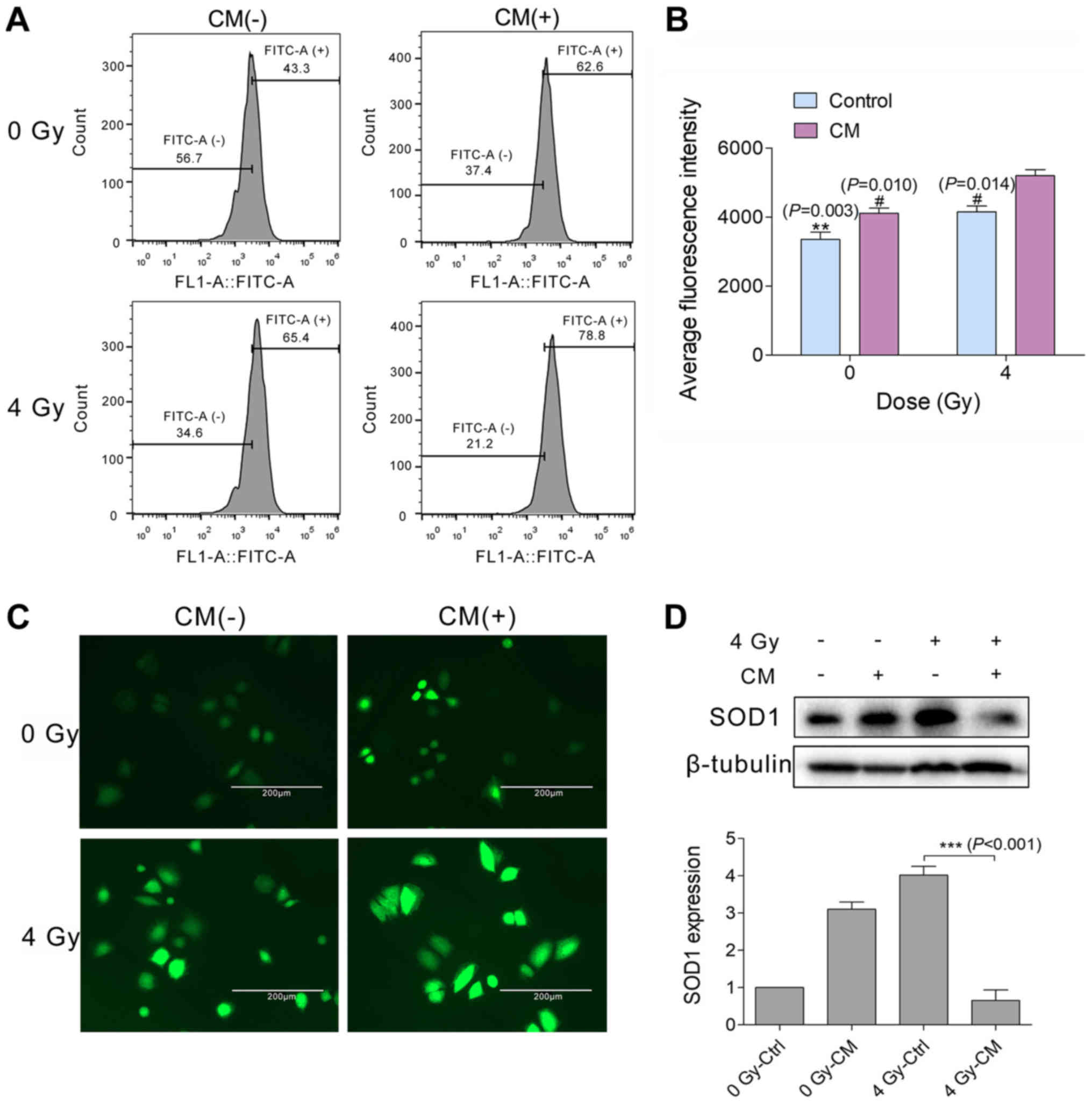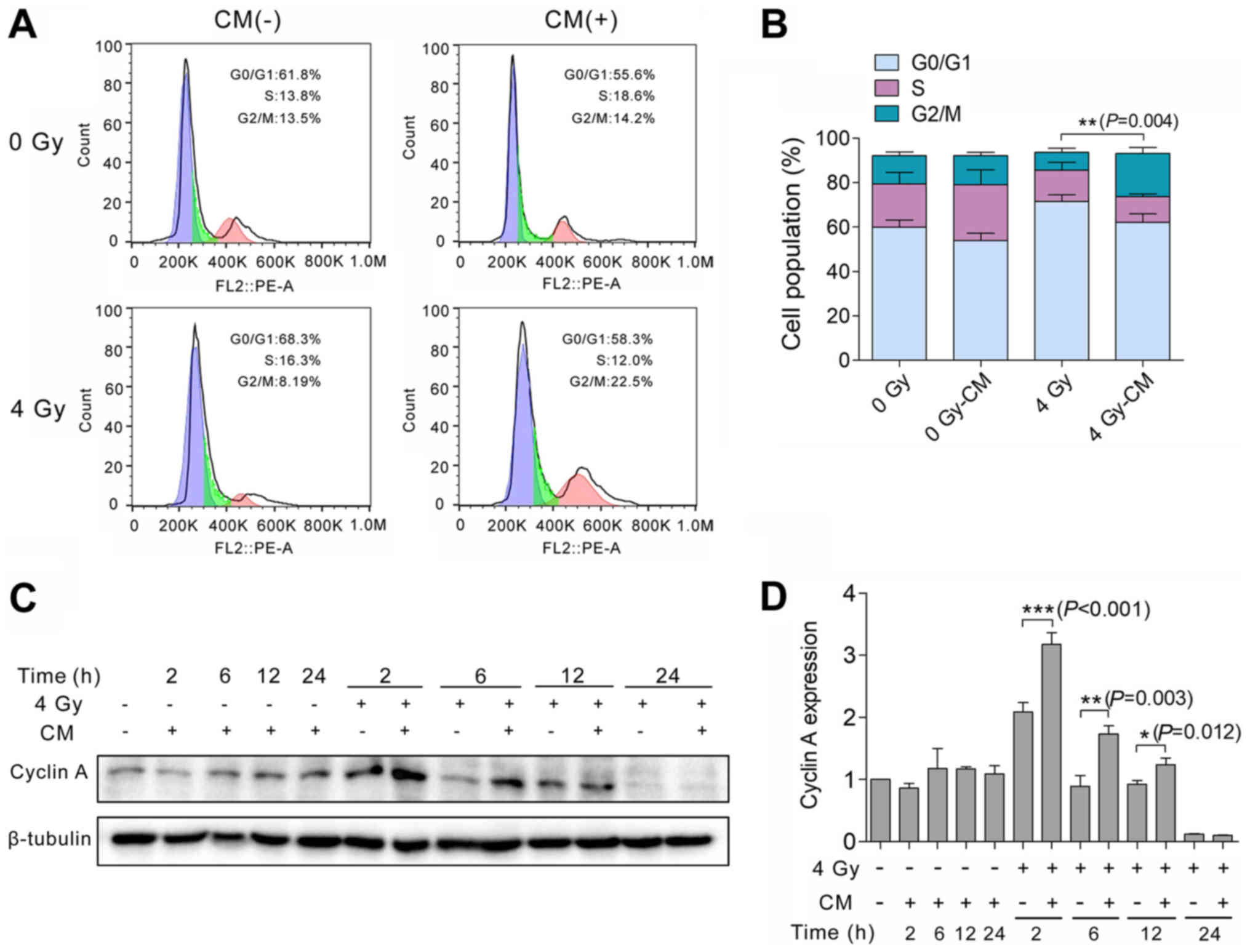|
1
|
Chen W, Zheng R, Baade PD, Zhang S, Zeng
H, Bray F, Jemal A, Yu XQ and He J: Cancer statistics in China,
2015. CA Cancer J Clin. 66:115–132. 2016. View Article : Google Scholar : PubMed/NCBI
|
|
2
|
Chen Z, Fillmore CM, Hammerman PS, Kim CF
and Wong KK: Non-small-cell lung cancers: A heterogeneous set of
diseases. Nat Rev Cancer. 14:535–546. 2014. View Article : Google Scholar : PubMed/NCBI
|
|
3
|
Pathak AK, Bhutani M, Mohan A, Guleria R,
Bal S and Kochupillai V: Non small cell lung cancer (NSCLC):
current status and future prospects. Indian J Chest Dis Allied Sci.
46:191–203. 2004.PubMed/NCBI
|
|
4
|
Verma V, McMillan MT, Grover S and Simone
CB II: Stereotactic body radiation therapy and the influence of
chemotherapy on overall survival for large (≥5 centimeter)
non-small cell lung cancer. Int J Radiat Oncol Biol Phys.
97:146–154. 2017. View Article : Google Scholar
|
|
5
|
Arechaga-Ocampo E, Lopez-Camarillo C,
Villegas-Sepulveda N, Gonzalez-De la Rosa CH, Perez-Añorve IX,
Roldan-Perez R, Flores-Perez A, Peña-Curiel O, Angeles-Zaragoza O,
Rangel Corona R, et al: Tumor suppressor miR-29c regulates
radioresistance in lung cancer cells. Tumour Biol.
39:10104283176950102017. View Article : Google Scholar : PubMed/NCBI
|
|
6
|
Hsieh CH, Lee CH, Liang JA, Yu CY and Shyu
WC: Cycling hypoxia increases U87 glioma cell radioresistance via
ROS induced higher and long-term HIF-1 signal transduction
activity. Oncol Rep. 24:1629–1636. 2010. View Article : Google Scholar : PubMed/NCBI
|
|
7
|
Desai A, Webb B and Gerson SL: CD133+
cells contribute to radioresistance via altered regulation of DNA
repair genes in human lung cancer cells. Radiother Oncol.
110:538–545. 2014. View Article : Google Scholar : PubMed/NCBI
|
|
8
|
Condon LT, Ashman JN, Ell SR, Stafford ND,
Greenman J and Cawkwell L: Overexpression of Bcl-2 in squamous cell
carcinoma of the larynx: A marker of radioresistance. Int J Cancer.
100:472–475. 2002. View Article : Google Scholar : PubMed/NCBI
|
|
9
|
Efimova E, Khodarev N, Darga T, Labay E,
Levina V, Lokshin A and Weichselbaum R: Tumor radioresistance is
linked to resistance to death signaling pathways associated with
tumor microenvironment. Proceedings of the 98th AACR Annual
Meeting. American Association for Cancer Research; Los Angeles, CA.
2007;
|
|
10
|
Chan R, Sethi P, Jyoti A, McGarry R and
Upreti M: Investigating the radioresistant properties of lung
cancer stem cells in the context of the tumor microenvironment.
Radiat Res. 185:169–181. 2016. View Article : Google Scholar : PubMed/NCBI
|
|
11
|
Schlehaider U, Hill HZ, Pashapour A and
Hill GJ: Influence of an autocrine multitherapy resistance factor
on radiation responses of melanoma cells. Melanoma Res. 4:21–27.
1994. View Article : Google Scholar : PubMed/NCBI
|
|
12
|
Neta R, Perlstein R, Vogel SN, Ledney GD
and Abrams J: Role of interleukin 6 (IL-6) in protection from
lethal irradiation and in endocrine responses to IL-1 and tumor
necrosis factor. J Exp Med. 175:689–694. 1992. View Article : Google Scholar : PubMed/NCBI
|
|
13
|
Bougen NM, Steiner M, Pertziger M,
Banerjee A, Brunet-Dunand SE, Zhu T, Lobie PE and Perry JK:
Autocrine human GH promotes radioresistance in mammary and
endometrial carcinoma cells. Endocr Relat Cancer. 19:625–644. 2012.
View Article : Google Scholar : PubMed/NCBI
|
|
14
|
Knizetova P, Ehrmann J, Hlobilkova A,
Vancova I, Kalita O, Kolar Z and Bartek J: Autocrine regulation of
glioblastoma cell cycle progression, viability and radioresistance
through the VEGF-VEGFR2 (KDR) interplay. Cell Cycle. 7:2553–2561.
2008. View Article : Google Scholar : PubMed/NCBI
|
|
15
|
Centurione L and Aiello FB: DNA Repair and
Cytokines: TGF-β, IL-6, and Thrombopoietin as Different Biomarkers
of Radioresistance. Front Oncol. 6:1752016. View Article : Google Scholar
|
|
16
|
Keller S, Sanderson MP, Stoeck A and
Altevogt P: Exosomes: From biogenesis and secretion to biological
function. Immunol Lett. 107:102–108. 2006. View Article : Google Scholar : PubMed/NCBI
|
|
17
|
Mutschelknaus L, Peters C, Winkler K,
Yentrapalli R, Heider T 1, Atkinson MJ and Moertl S: Exosomes
derived from squamous head and neck cancer promote cell survival
after ionizing radiation. PLoS One. 11:e01522132016. View Article : Google Scholar : PubMed/NCBI
|
|
18
|
Raimondo S, Saieva L, Corrado C, Fontana
S, Flugy A, Rizzo A, De Leo G and Alessandro R: Chronic myeloid
leukemia-derived exosomes promote tumor growth through an autocrine
mechanism. Cell Commun Signal. 13:82015. View Article : Google Scholar : PubMed/NCBI
|
|
19
|
Prasad S, Gupta SC and Tyagi AK: Reactive
oxygen species (ROS) and cancer: Role of antioxidative
nutraceuticals. Cancer Lett. 387:95–105. 2017. View Article : Google Scholar
|
|
20
|
Pagano M, Pepperkok R, Verde F, Ansorge W
and Draetta G: Cyclin A is required at two points in the human cell
cycle. EMBO J. 11:961–971. 1992. View Article : Google Scholar : PubMed/NCBI
|
|
21
|
Mateo F, Vidal-Laliena M, Canela N, Busino
L, Martinez-Balbas MA, Pagano M, Agell N and Bachs O: Degradation
of cyclin A is regulated by acetylation. Oncogene. 28:2654–2666.
2009. View Article : Google Scholar : PubMed/NCBI
|
|
22
|
Celeste A, Petersen S, Romanienko PJ,
Fernandez-Capetillo O, Chen HT, Sedelnikova OA, Reina-San-Martin B,
Coppola V, Meffre E, Difilippantonio MJ, et al: Genomic instability
in mice lacking histone H2AX. Science. 296:922–927. 2002.
View Article : Google Scholar : PubMed/NCBI
|
|
23
|
Yang JA, Liu BH, Shao LM, Guo ZT, Yang Q,
Wu LQ, Ji BW, Zhu XN, Zhang SQ, Li CJ, et al: LRIG1 enhances the
radio-sensitivity of radioresistant human glioblastoma U251 cells
via attenuation of the EGFR/Akt signaling pathway. Int J Clin Exp
Pathol. 8:3580–3590. 2015.
|
|
24
|
Tamulevicius P, Wang M and Iliakis G:
Homology-directed repair is required for the development of
radioresistance during S phase: Interplay between double-strand
break repair and checkpoint response. Radiat Res. 167:1–11. 2007.
View Article : Google Scholar : PubMed/NCBI
|
|
25
|
Schey KL, Luther JM and Rose KL:
Proteomics characterization of exosome cargo. Methods. 87:75–82.
2015. View Article : Google Scholar : PubMed/NCBI
|
|
26
|
Ji X, Ji J, Shan F, Zhang Y, Chen Y and Lu
X: Cancer-associated fibroblasts from NSCLC promote the
radioresistance in lung cancer cell lines. Int J Clin Exp Med.
8:7002–7008. 2015.PubMed/NCBI
|
|
27
|
Chen Y, Tsai Y, Hsu JW, Duan SZ, Keng P
and Lee SO: Abstract LB-210: IL-6 promotes stemness of cancer stem
cells and may contribute to radiation resistance of non-small cell
lung cancer. Cancer Res. 74(Suppl 19): LB-2102014. View Article : Google Scholar
|
|
28
|
Ma C, Nguyen H, Paradiso L, Putz U, Luwor
R, Kaye A and Morokoff A: P08.35 Exosomes derived from Glioma Stem
Cells (GSCs) promote cell migration, proliferation and radiation
resistance in brain cancer. Neuro Oncol. 19(Suppl 3): iii612017.
View Article : Google Scholar :
|
|
29
|
Teng K, Zhang Y, Hu X, Ding Y, Gong R and
Liu L: Nimotuzumab enhances radiation sensitivity of NSCLC H292
cells in vitro by blocking epidermal growth factor receptor nuclear
translo-cation and inhibiting radiation-induced DNA damage repair.
OncoTargets Ther. 8:809–818. 2015. View Article : Google Scholar
|
|
30
|
McLaughlin KA, Nemeth Z, Bradley CA,
Humphreys L, Stasik I, Fenning C, Majkut J, Higgins C, Crawford N,
Holohan C, et al: FLIP: A Targetable Mediator of Resistance to
Radiation in Non-Small Cell Lung Cancer. Mol Cancer Ther.
15:2432–2441. 2016. View Article : Google Scholar : PubMed/NCBI
|
|
31
|
Jella KK, Rani S, O’Driscoll L, McClean B,
Byrne HJ and Lyng FM: Exosomes are involved in mediating radiation
induced bystander signaling in human keratinocyte cells. Radiat
Res. 181:138–145. 2014. View Article : Google Scholar : PubMed/NCBI
|
|
32
|
Xu S, Wang J, Ding N, Hu W, Zhang X, Wang
B, Hua J, Wei W and Zhu Q: Exosome-mediated microRNA transfer plays
a role in radiation-induced bystander effect. RNA Biol.
12:1355–1363. 2015. View Article : Google Scholar : PubMed/NCBI
|
|
33
|
Xie Q, Zhou Y, Lan G, Yang L, Zheng W,
Liang Y and Chen T: Sensitization of cancer cells to radiation by
selenadiazole derivatives by regulation of ROS-mediated DNA damage
and ERK and AKT pathways. Biochem Biophys Res Commun. 449:88–93.
2014. View Article : Google Scholar : PubMed/NCBI
|
|
34
|
Clerkin JS, Naughton R, Quiney C and
Cotter TG: Mechanisms of ROS modulated cell survival during
carcinogenesis. Cancer Lett. 266:30–36. 2008. View Article : Google Scholar : PubMed/NCBI
|
|
35
|
Zhang H, Yue J, Jiang Z, Zhou R, Xie R, Xu
Y and Wu S: CAF-secreted CXCL1 conferred radioresistance by
regulating DNA damage response in a ROS-dependent manner in
esophageal squamous cell carcinoma. Cell Death Dis. 8:e27902017.
View Article : Google Scholar : PubMed/NCBI
|
|
36
|
Cleaver JE: γH2Ax: Biomarker of damage or
functional participant in DNA repair ‘all that glitters is not
gold!’. Photochem Photobiol. 87:1230–1239. 2011. View Article : Google Scholar : PubMed/NCBI
|
|
37
|
Turinetto V, Orlando L, Sanchez-Ripoll Y,
Kumpfmueller B, Storm MP, Porcedda P, Minieri V, Saviozzi S,
Accomasso L, Cibrario Rocchietti E, et al: High basal γH2AX levels
sustain self-renewal of mouse embryonic and induced pluripotent
stem cells. Stem Cells. 30:1414–1423. 2012. View Article : Google Scholar : PubMed/NCBI
|
|
38
|
Chen X, Wong P, Radany EH, Stark JM,
Laulier C and Wong JY: Suberoylanilide hydroxamic acid as a
radiosen-sitizer through modulation of RAD51 protein and inhibition
of homology-directed repair in multiple myeloma. Mol Cancer Res.
10:1052–1064. 2012. View Article : Google Scholar : PubMed/NCBI
|
|
39
|
Limbo O, Chahwan C, Yamada Y, de Bruin RA,
Wittenberg C and Russell P: Ctp1 is a cell-cycle-regulated protein
that functions with Mre11 complex to control double-strand break
repair by homologous recombination. Mol Cell. 28:134–146. 2007.
View Article : Google Scholar : PubMed/NCBI
|
|
40
|
Helmink BA, Bredemeyer AL, Lee BS, Huang
CY, Sharma GG, Walker LM, Bednarski JJ, Lee WL, Pandita TK, Bassing
CH, et al: MRN complex function in the repair of chromosomal
Rag-mediated DNA double-strand breaks. J Exp Med. 206:669–679.
2009. View Article : Google Scholar : PubMed/NCBI
|
|
41
|
Lavin MF, Kozlov S, Gatei M and Kijas AW:
ATM-Dependent Phosphorylation of All Three Members of the MRN
Complex: From Sensor to Adaptor. Biomolecules. 5:2877–2902. 2015.
View Article : Google Scholar : PubMed/NCBI
|














